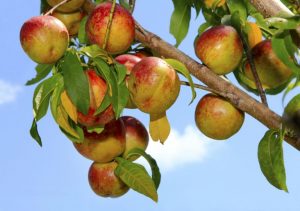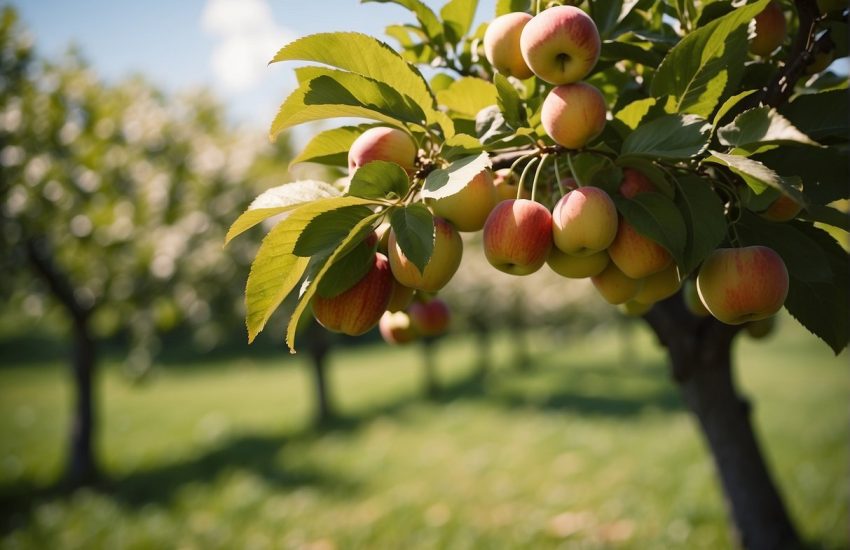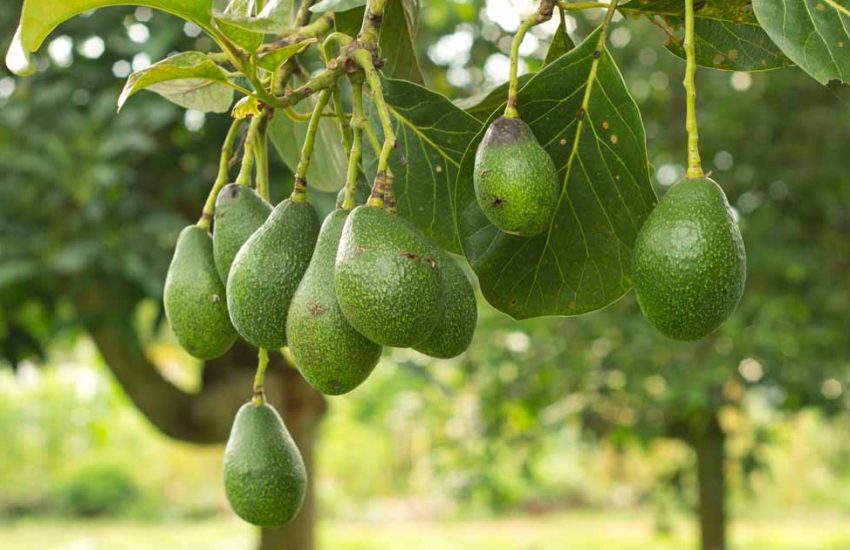The Best Fruit Trees to Plant in Arizona
The State of Arizona conjures up many images: wide desert landscapes, hot summer sun, and snowbirds in the winter. What most people do not associate with the state are images of lush orchards filled with ripening fruit trees, like apples, figs and plums. However, it is not impossible to plant and grow fruit trees in Arizona.
To meet with success, you must know what kinds of fruit trees thrive in the Arizona climate and plant accordingly. The following list of trees represent some of the fruit trees that grow in Arizona.

Before You Plant Fruit Trees in Arizona
Where you live plays a big role in the types of fruit trees you should plant. It’s important to know that Arizona’s climate sits in several zones, from zone 5 to 11. These zone classifications determine how hardy a plant has to be in order to thrive in a certain climate.
When you’re buying fruit plants for your home, you need to look at the area’s coolest temperatures. This tells you which types of plants can grow where, so even though it’s possible to grow fruit trees in Arizona, not all fruit trees will grow in all areas. For example, homes in the zone 5 area can see temperatures of -20 below zero. Homes in zone 11 can see temps from 40 to 50 degrees Fahrenheit.
It’s additionally important to note that many fruit trees “need” a certain amount of cold in order to grow. It’s in their genetics, so trying to plant a cold-weather fruit tree in very hot temperatures won’t work. Instead, it’s best to choose the types of fruit that grow best in your zone.
Fig Trees
If you grew up going to Sunday school, then chances are, you know about the fig tree. Many of the Bible’s stories center around this sweet, juicy fruit. As such, it counts among humanity’s oldest known fruit trees. People have literally eaten figs for thousands of years.
The Ficus carica L., or fig tree, first grew in Asia Minor, but was eventually discovered by the ancient Greeks and Romans. For a long time, due to the friendly climate, the fig tree thrived in the Mediterranean area. Eventually, the fig tree made its way to the US, when Fransiscan missionaries brought it to California in the early 1500s.
Their popularity makes sense. They grow in warmer climates and grow to be very large trees — up to 30 feet in some cases. They also live a very long time. Some fig trees around the world have seen at least 100 birthdays.
In Arizona specifically, if your home sits in zones 8 through 10, then you have a good chance of growing some thriving fit trees in your orchard. The White Kadota, Black Mission, Condaria and Brown Turkey varieties grow best in Arizona.
They will grow in containers if your space is limited. However, they do need a hot and dry climate to really thrive. Many varieties also grow without pollination, so they may be ideal for you if you don’t have much experience growing fruit trees.
Apple Trees
Apples count among the world’s most popular fruits, and with their crisp, sweet goodness, it’s easy to see why. They’re refreshing as a cool snack on a hot summer day and a fun treat for Halloween if you cover them with caramel and nuts.
Symbolically, they are rich with meaning. Traditionally, people associate them with being the forbidden fruit in the Garden of Eden. The ancient Norse peoples used them in rituals when they wanted something to symbolize eternal love, happiness, wisdom and good health. In Greek mythology, it is said that apples were a gift to Hera from Gaia, the Earth goddess. For the Celts, apples meant healing and wholeness. All in all, they’re ripe — no pun intended — with meaning and good fortune.
If you’re interested in growing apples, it’s best if you live in zones 5 to 8 in Arizona. Some varieties work if you plant them in the spring. Others do better in the fall. In light of that, be sure to check on the variety before you buy. Your local university extension office will have a better idea of the types of apples that will grow best in your area of Arizona.
Some ambitious fruit growers want to know if it’s possible to grow apples from the apple seed. Technically, you can, but the resulting apples will likely disappoint. It’s better to grow them from a sapling if you’re hoping for fruit that you can eat for years to come.
Plum Trees
Plant plum trees if you need a visual reminder to not give up, no matter how difficult the circumstances because that’s what plums have represented for centuries. To the Chinese, the plum is a reminder that winter always ends and spring always follows. Their blossoms grow even in the coldest of winters in some places. As such, they are the visual embodiment of beauty and hope in the most contrary circumstances. They also symbolize the immortals because myth has it that the immortals of China ate plums to give themselves vitality and strength.
From a grower’s standpoint, it’s best to plant them in zones 5 through 9. This is suitable for fruit growers in Arizona’s northern regions. Most plum varieties that will grow in Arizona, like the Beauty, Gulf Ruby, and Methley, require at least 250 hours of chill time, while the Santa Rosa requires at least 300 hours to thrive. Many varieties can self-pollinate, though some growers like to plant trees of a second variety for cross-pollination purposes.
Plum trees are susceptible to aphid infestations, which can make the leaves curl. Introducing aphid-eating insects like lady bugs can help. If you’re worried about leaf curl, begin looking for signs of it in the early days of spring. This will give you enough time to combat the possible infestation and have a thriving plum orchard as the months grow warmer.
Olive Trees
The olive is another fruit tree that gets a lot of play in ancient religious texts, particularly the Bible. Symbolic of peace and harmony, the popularity of this fruit goes back to ancient times and Greek myth. Said to be a gift (of sorts) from the goddess Athena to Zeus, this savory fruit takes center stage in Mediterranean cooking.
Planting olive trees gives you a savory alternative to the standard sweet fruit orchard. Prolific in temperature zones 7 through 11, they do best if they’re planted in areas of Arizona that don’t see hard winter freezes. That said, if you’re in the colder part of the temperature zone — that is zone 7 — be mindful of the kind of olive trees you choose to plant. Make sure they’re adaptable to cooler climates.
They require a two-month dormancy period before they will bear fruit. They grow best in climates here the summers run on the hot and dry side and the winters are cool but not cold. In fact, harsh winter temperatures that dip below 20 degrees Fahrenheit can potentially knock out an olive tree. They prefer to grow in full sun exposure. Some varieties grow up to 30 feet high.
The other challenge you’ll be facing is how to process the fruits once harvest commences. You really can’t consume olives raw, which means they need some sort of treatment, like being processed in oil, cured, or brined.
Mango Trees
Symbolizing wealth, love, and fertility, mango trees are winter’s flower, bringing beauty and fragrance to your fruit orchards. If you happen to dream about mangoes, it’s a sign that your fortune is about to change for the better.
From a food perspective, they’re popular in fruit salads and smoothies. Mango salsa is also an excellent alternative to tomato salsa. It can be eaten with corn chips, or for a sweet treat, try dipping apple chips into the mango salsa for a healthy snack.
Mangoes are often associated with places like Hawaii and other subtropical and tropical climates. However, they will grow in some of Arizona’s microclimates, making them a delicious and unusual addition to an orchard. They don’t do well in frosty cold winters, nor should they be in soil that’s too salty. If you do grow mangoes, be diligent about draining your soil to clear out any extra saltiness.
That said, they’re a relatively hardy plant that will grow in both drought and heat. Ideally, you live in zones 10 or 11 if you want to cultivate mangoes in your fruit tree garden. Mango trees grow up to 60 feet tall.
Lemon Trees
Lemons lend your orchard a clean, fresh smell. Popular as a garnish for cocktail drinks and as a basis for homemade cleaning supplies, lemons count as a staple fruit in many a gourmand’s kitchen. On particularly hot summer days, few things freshen up a glass of ice water quite like a squeeze of lemon. As such, lemons have come to symbolize optimism and happiness.
They grow up to 20 feet tall and can have a diameter of 15 to 20 feet. The best varieties to grow in the Arizona desert — zones 9 through 11 — are the Pink Lemon, the Eurekea, the Meyer Lemon or the Lisbon.
Lemon plants prefer soils that are slightly acidic and which have been well drained. That said, they can adapt themselves to desert soils. They also do better on higher ground. Adding mulch to the soil helps them grow better.
It’s also good to point out that many people enjoy growing lemon trees indoors and can produce indoor trees that get up to 5 feet tall. Indoor trees require the same acidic soil requirements to grow well.
If, when you’re pruning your tree, you happen to expose the bark, it’s recommended that you give the bark a good coating of white paint to protect it from sunburn. Despite the tendency to sunburn, lemon trees require full sunlight to grow to their full potential.
Final Thoughts
If you’re a fan of fruit trees and live in Arizona, you may believe that it’s not possible to have a luscious orchard of fruit, but that’s just not true. Arizona has a number of climates that are suitable for growing fruit trees, including both sweet and savory fruits.
Arizona fruit growers will want to determine which climate zone they live in before they begin planting fruit trees in their orchards. Some types of fruit trees have a genetic predisposition that requires them to be exposed to a cold snap before they can grow properly. Other fruit trees will die if they’re exposed to lower temperatures.
As such, if you plan on growing your own fruit trees in Arizona, then you do want to find out which zone you live in. Arizona’s cooler zones in the zone 5 range will support trees like apple trees. Other trees, like mango trees, are really better suited for the highest Arizona temperatures, which fall into zones 10 or 11.
Finally, it’s worth pointing out that some of the fruit trees on this list grow well in containers or even indoors. If you’re just starting out as a fruit grower, these may be the most manageable fruit trees to start with.


